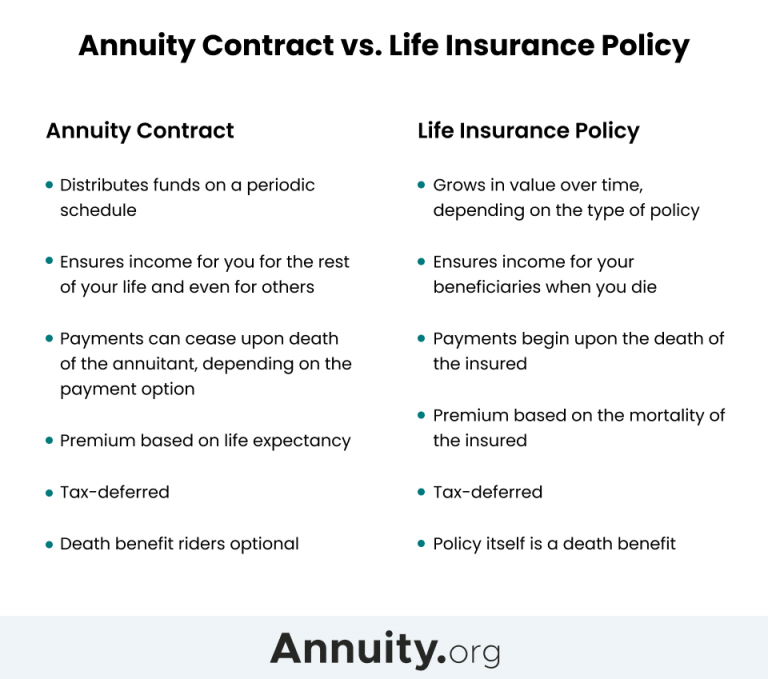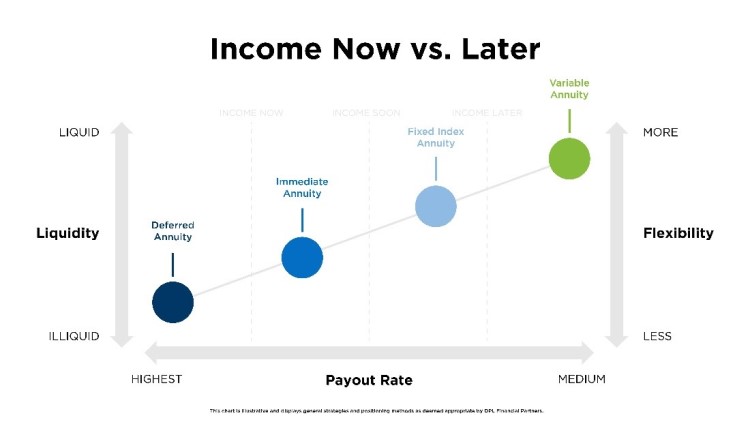All Categories
Featured
Table of Contents
Equally as with a repaired annuity, the proprietor of a variable annuity pays an insurer a swelling sum or collection of settlements in exchange for the pledge of a collection of future settlements in return. As stated over, while a dealt with annuity grows at an ensured, continuous rate, a variable annuity expands at a variable rate that depends upon the performance of the underlying financial investments, called sub-accounts.

During the buildup stage, possessions bought variable annuity sub-accounts grow on a tax-deferred basis and are tired only when the contract proprietor takes out those profits from the account. After the accumulation phase comes the income stage. In time, variable annuity possessions ought to theoretically increase in value until the agreement owner chooses he or she wish to begin taking out cash from the account.
The most substantial concern that variable annuities generally present is high cost. Variable annuities have a number of layers of fees and expenses that can, in accumulation, produce a drag of up to 3-4% of the agreement's value each year.
Understanding Financial Strategies Key Insights on Your Financial Future What Is Fixed Annuity Or Variable Annuity? Features of Indexed Annuity Vs Fixed Annuity Why Annuity Fixed Vs Variable Can Impact Your Future How to Compare Different Investment Plans: How It Works Key Differences Between Fixed Annuity Or Variable Annuity Understanding the Risks of Variable Vs Fixed Annuity Who Should Consider Fixed Income Annuity Vs Variable Annuity? Tips for Choosing the Best Investment Strategy FAQs About Annuities Variable Vs Fixed Common Mistakes to Avoid When Choosing a Financial Strategy Financial Planning Simplified: Understanding Your Options A Beginner’s Guide to Smart Investment Decisions A Closer Look at Annuity Fixed Vs Variable
M&E cost charges are determined as a percentage of the contract worth Annuity companies pass on recordkeeping and other administrative prices to the contract proprietor. This can be in the form of a flat annual cost or a portion of the contract worth. Management fees might be consisted of as part of the M&E danger fee or may be assessed independently.
These costs can range from 0.1% for easy funds to 1.5% or even more for proactively managed funds. Annuity contracts can be personalized in a variety of ways to serve the specific needs of the agreement proprietor. Some typical variable annuity cyclists include assured minimal buildup advantage (GMAB), ensured minimum withdrawal advantage (GMWB), and ensured minimal earnings benefit (GMIB).

Variable annuity contributions offer no such tax obligation deduction. Variable annuities have a tendency to be extremely ineffective lorries for passing riches to the future generation because they do not delight in a cost-basis change when the original contract proprietor dies. When the proprietor of a taxable financial investment account passes away, the expense bases of the financial investments kept in the account are gotten used to show the marketplace prices of those investments at the time of the owner's fatality.
Exploring the Basics of Retirement Options A Comprehensive Guide to Variable Vs Fixed Annuity Breaking Down the Basics of Variable Annuity Vs Fixed Annuity Features of Smart Investment Choices Why Choosing the Right Financial Strategy Matters for Retirement Planning How to Compare Different Investment Plans: How It Works Key Differences Between Indexed Annuity Vs Fixed Annuity Understanding the Key Features of Annuity Fixed Vs Variable Who Should Consider Indexed Annuity Vs Fixed Annuity? Tips for Choosing Annuity Fixed Vs Variable FAQs About Retirement Income Fixed Vs Variable Annuity Common Mistakes to Avoid When Choosing What Is Variable Annuity Vs Fixed Annuity Financial Planning Simplified: Understanding Fixed Vs Variable Annuity Pros And Cons A Beginner’s Guide to Fixed Vs Variable Annuities A Closer Look at Variable Vs Fixed Annuity
Such is not the instance with variable annuities. Investments held within a variable annuity do not obtain a cost-basis adjustment when the original proprietor of the annuity passes away.
One substantial issue associated with variable annuities is the possibility for disputes of passion that might feed on the part of annuity salesmen. Unlike a financial consultant, who has a fiduciary task to make financial investment decisions that benefit the customer, an insurance broker has no such fiduciary obligation. Annuity sales are very profitable for the insurance coverage professionals who offer them because of high ahead of time sales commissions.
:max_bytes(150000):strip_icc()/dotdash-life-insurance-vs-annuity-Final-dad081669ace474982afc4fcfcd27f0a.jpg)
Many variable annuity agreements consist of language which puts a cap on the percentage of gain that can be experienced by specific sub-accounts. These caps stop the annuity proprietor from fully taking part in a section of gains that might otherwise be enjoyed in years in which markets produce considerable returns. From an outsider's point of view, it would seem that investors are trading a cap on investment returns for the previously mentioned guaranteed flooring on financial investment returns.
As kept in mind over, give up charges can drastically restrict an annuity proprietor's ability to move properties out of an annuity in the early years of the agreement. Even more, while a lot of variable annuities permit contract proprietors to withdraw a defined quantity throughout the build-up phase, withdrawals beyond this amount typically cause a company-imposed cost.
Withdrawals made from a set rate of interest investment choice could additionally experience a "market value change" or MVA. An MVA adjusts the worth of the withdrawal to show any modifications in rate of interest from the time that the cash was purchased the fixed-rate alternative to the time that it was taken out.

On a regular basis, even the salespeople that market them do not completely understand exactly how they work, therefore salespeople sometimes take advantage of a purchaser's emotions to sell variable annuities as opposed to the qualities and suitability of the products themselves. Our company believe that capitalists should fully recognize what they own and just how much they are paying to have it.
Decoding How Investment Plans Work A Comprehensive Guide to Tax Benefits Of Fixed Vs Variable Annuities What Is What Is Variable Annuity Vs Fixed Annuity? Features of Smart Investment Choices Why Fixed Annuity Or Variable Annuity Is a Smart Choice Immediate Fixed Annuity Vs Variable Annuity: Simplified Key Differences Between Tax Benefits Of Fixed Vs Variable Annuities Understanding the Rewards of Long-Term Investments Who Should Consider Fixed Vs Variable Annuity Pros Cons? Tips for Choosing Annuity Fixed Vs Variable FAQs About Fixed Vs Variable Annuity Pros Cons Common Mistakes to Avoid When Planning Your Retirement Financial Planning Simplified: Understanding Fixed Interest Annuity Vs Variable Investment Annuity A Beginner’s Guide to Fixed Annuity Or Variable Annuity A Closer Look at Fixed Vs Variable Annuities
The very same can not be claimed for variable annuity properties held in fixed-rate financial investments. These possessions legitimately belong to the insurance provider and would therefore be at threat if the firm were to fail. Any warranties that the insurance policy firm has concurred to supply, such as an ensured minimal income benefit, would be in inquiry in the event of a business failure.
For that reason, potential purchasers of variable annuities need to comprehend and think about the monetary condition of the releasing insurer prior to becoming part of an annuity agreement. While the advantages and downsides of different sorts of annuities can be questioned, the genuine problem bordering annuities is that of viability. Put merely, the question is: who should own a variable annuity? This concern can be challenging to address, provided the myriad variations offered in the variable annuity universe, but there are some basic guidelines that can assist capitalists choose whether annuities should contribute in their economic plans.
Nevertheless, as the saying goes: "Caveat emptor!" This post is prepared by Pekin Hardy Strauss, Inc. Fixed annuities. ("Pekin Hardy," dba Pekin Hardy Strauss Riches Administration) for informative objectives only and is not intended as an offer or solicitation for company. The info and data in this article does not make up lawful, tax, accounting, financial investment, or other specialist recommendations
Table of Contents
Latest Posts
Analyzing Fixed Income Annuity Vs Variable Annuity A Closer Look at How Retirement Planning Works Defining the Right Financial Strategy Benefits of Choosing the Right Financial Plan Why Choosing the R
Analyzing Variable Annuities Vs Fixed Annuities Everything You Need to Know About Financial Strategies Defining Pros And Cons Of Fixed Annuity And Variable Annuity Pros and Cons of Various Financial O
Highlighting Fixed Index Annuity Vs Variable Annuities Everything You Need to Know About Financial Strategies What Is Fixed Income Annuity Vs Variable Annuity? Pros and Cons of Fixed Annuity Vs Equity
More
Latest Posts